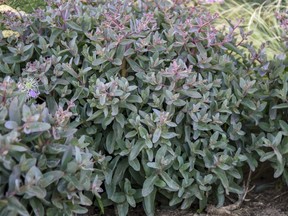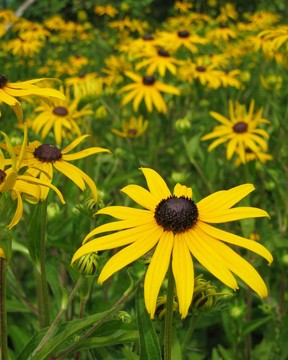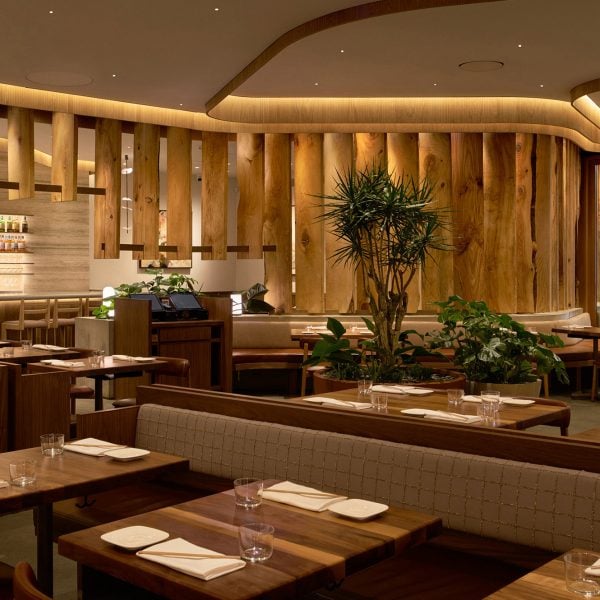[ad_1]
Annuals and perennials are starting to appear a little tired and in need of reinforcements to create a vibrant late summer look

Reviews and recommendations are unbiased and products are independently selected. Postmedia may earn an affiliate commission from purchases made through links on this page.
Article content
As we enter the last stretch of summer, many gardens could use a colour refresh. While many annuals and perennials have performed very well this year, some are starting to appear a little tired and in need of reinforcements to create a vibrant late summer and early fall look and feel.
Late summer grasses are certainly some of my go-to plants for making that changeover into autumn. I know that purple fountain grass (Pennisetum setaceum Rubrum) is rated a zone 9 annual, but it’s hard to beat. Its dramatic dark foliage and masses of burgundy flower heads that dance in the breeze create pure garden magic. This pennisetum loves the August heat and makes a standout focal point in any container or garden bed.
Advertisement 2
Article content
Some of the perennial varieties of the pennisetum family, from the tiny P. Little Bunny to the larger P. Red Head, are ornamental grasses that flower in August, and they will only become more dramatic each year. Pennisetums play nicely with the entire rudbeckia family, and when garden mums begin showing up, pennisetums are their perfect companions. Golden lysimachia (creeping jenny) adds beautiful foliage contrast to any pennisetum planting, and it makes an excellent spillover feature in a container.
The large and ever-increasing family of miscanthus grasses is also getting ready to plume up in a few weeks. One of the most underused varieties is the short M. Yaku Jima which combines so well with a wide range of late summer perennials and is a must-have in any garden. From the vibrant yellow-orange blooms of heliopsis and heleniums to the late flowering echinaceas, this compact miscanthus is a great partner.

Taller varieties of miscanthus, like Morning Light, which grows more than one metre tall and has feathery, variegated foliage, M. Fire Dragon which also grows four to five feet and has foliage that turns red and M. Huron Sunrise, all create a garden backdrop for tall, late-blooming perennials, like rudbeckia Herbstsonne Eupatorium Gateway and helianthus Suncatcher. The glow of late summer sunlight makes these plants come alive.
Article content
Advertisement 3
Article content
Mid-sized grasses, like andropogon Blackhawks, schizachyrium Prairie Winds Blue Paradise and Smoke Signal have blue-green foliage that turns a rich, deep purple-red. Japanese blood grass (Imperata cylindrica Red Baron) is now turning its tips into a blood red display that highlights any garden area or container it inhabits. These grasses and so many more introduce rich texture, colour and movement into our late summer and fall gardens.

For a brilliant pop of colour, this is the only time of the year that you’ll find the spectacular, large flowering perennial hibiscus. Walters Gardens in Michigan has bred many new varieties, as well as producing Proven Winners exceptional Summerific series, which has become the new standard of garden hibiscus. There is nothing in our gardens that can match the spectacular displays these giant bloomers provide. Last summer I happened upon a neighbourhood where masses of perennial hibiscus had been planted in a series of connecting gardens, and their impact was truly amazing. There are many varieties of perennial hibiscus available today in a wide range of flower colours and with rich variations of foliage as well.
Advertisement 4
Article content
Perennial hibiscus have blossoms measuring six-to-eight-inches in size and mostly in shades of pink; many have contrasting red throats. I love the bicolours, like the soft shades of Ballet Slippers as well as the vibrant Cherry Choco Latte As for the reds, Holy Grail, Valentine’s Crush and Blackberry Merlot create a dramatic colour range. For deep, rich, rosy pinks, you can’t go wrong with H. Airbrush Effect, H. Evening Roses and H. Watermelon Ruffles. Most hibiscus have a range of green foliage, but many of Proven Winners Summerific series have rich burgundy leaves that contrast beautifully with their huge blossoms.
For optimum performance, hibiscus need the warmest, sunniest spot in your garden. They thrive in summer heat and are very drought tolerant once established. Cool coastal areas are not ideal locations for these heat lovers.
Although perennial hibiscus are late to rise from the ground, often making their appearance only in late June, they grow very quickly up to 1.5 metres in height and width. Once they start blooming, they will often keep going well into September.
Advertisement 5
Article content
Another late summer superstar is the old-fashioned stonecrop or Sedum Spectabile. Now available in a wide selection of both foliage and flower colours, they have become a late summer go-to plant because they are the most heat and drought tolerant perennials that we have, and they do so much with so little care.
Stonecrops provide foliage colour as soon as spring begins, and they continually improve over the summer. The flower buds appear in late July. The cut flowers are becoming sought after because they last an amazingly long time. Stonecrops are great pollinator plants, flowering at a time when many other perennials are finishing. As the flowers open, they add fresh colour to any garden, and they make ideal container plants. Proven Winners has developed a Rock ‘N’ Grow collection which is among the last to flower. Many, like S. Midnight Velvet and S. Tiramisu have rich dark foliage which contrasts nicely with their red and pink flowers. S. Lemonjade is quite unique with its yellow flowers followed by peachy coloured seed heads. I also like the variegated white and green foliage of the old S. Frosted Fire with its contrasting pink flowers and S. Matrona with its darker foliage and rich pink blooms. All of these varieties have strong stems and stand up nicely in late summer rains.
Advertisement 6
Article content
It’s that time of the year when it’s smart to do a little tweaking in your garden to shift it into a late summer mode. These are just a few of the plants that can help make that transition and keep your garden looking fresh and exciting.
Bookmark our website and support our journalism: Don’t miss the news you need to know — add VancouverSun.com and TheProvince.com to your bookmarks and sign up for our newsletters here.
You can also support our journalism by becoming a digital subscriber: For just $14 a month, you can get unlimited access to The Vancouver Sun, The Province, National Post and 13 other Canadian news sites. Support us by subscribing today: The Vancouver Sun | The Province.
Article content
[ad_2]
Source link







 + Planting String of Watermelon Succulents
+ Planting String of Watermelon Succulents  with Garden Answer
with Garden Answer


